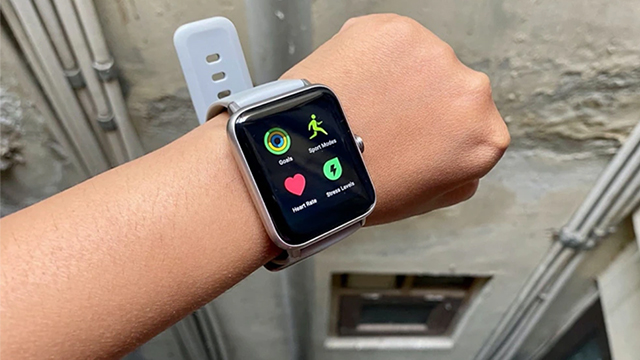Smartphones are the goto device for millions of people today, but another smart device is slowly catching up, and its demand has gotten everyone’s attention. We’re talking about smartwatches, and unlike the regular fitness bands, you have smartphone-like capability strapped onto your wrist. But that’s not what has got people hooked to smartwatches. After all, the last thing you want is another gadget that needs to be charged. Fitness over the past few years has become extremely crucial, and the pandemic had a big role to play in making sure people have a stronger focus on their health.
“As more and more people pivoted towards a healthy, fitness-driven lifestyle, we saw them looking out for gadgets that provide real-time intel on their physical and mental well-being. This created a surge in demand for smartwatches as they allow for round-the-clock health monitoring,” says Amit Khatri, Co-founder, Noise which was one of the many local brands to benefit from the emergence of smartwatches.
It would be unfair to attribute the growth of the smartwatch market to just one factor. And, the industry experts are confident that the trend of smartwatches is just picking up and has a big potential with its multi-dimensional use case along with the convenience of wearing them on the wrist. The numbers speak for themselves.
techARC’s India Wristables Market report says that 5.4 million Wristables (fitness bands and smartwatches) were shipped for the calendar year 2020. This translated into INR 3,837 crores in terms of value for various brands operating in the market. The same report also mentions that Noise led the smartwatch segment of Wristables followed by Realme and Apple in the country based on the number of units shipped during the last 12 months or so.
 Where the market is placed
Where the market is placed
The category has buyers at the different ends of the price spectrum. You have affordable products that are available for as low as INR 3,000 in the market. Brands such as BoAt, Fire Boltt, Noise, Molife, and Realme represent the affordable bracket. While the premium market gives you popular and recognized names such as Samsung, Asus, Huawei, OnePlus, and more. Though these products differ in terms of the features offered, but the overall quality remains intact, no matter how much you spend on a smartwatch, which is good to see.
As the technology continues to evolve and becomes more affordable. It will lead to more people experience these smartwatches without burning a hole in their pockets. India is predom – inantly a budget-conscious market, which is why the iPhones never go past the single-digit figures in the country. And even with smartwatches, the trend remains the same. Consumers are opt – ing for brands that are within their bud – get, especially when a device is purely meant to be a secondary screen for most people.
So, what exactly are people buy – ing in the smartwatch arena, and what has got them interested in these? “For today’s customers, devices must seam – lessly integrate into their daily lives and connect with other everyday items like their smartphones and TWS earbuds,” highlights Rishi Kishor Gupta, Vice Presi – dent, Consumer Business Group, Huawei India. Huawei is one of the few brands that has dabbled in both the affordable and premium space and found a great response from buyers. The era of wear – ables has seemingly played a big role in the proliferation of smartwatches, and its usage goes beyond the fitness mea – sures that most of us see as its prime objective. “Smartwatches continue to gain popularity, millions of consumers now use them every day, not only to track their activity but also to listen to music and perform other functions that are em – bedded in daily life,” Gupta adds explain – ing the proliferation of smartwatches. But the benefits of smartwatches do not outweigh the drawbacks of using one.
Some might say that charging smartwatches is still an issue with so many features packed inside, and the battery life not able to justify its func – tionality. But like the Apple Watch, the technology on that front is surely getting better, and more brands are likely to ben – efit from such advancements that make basic things possible.
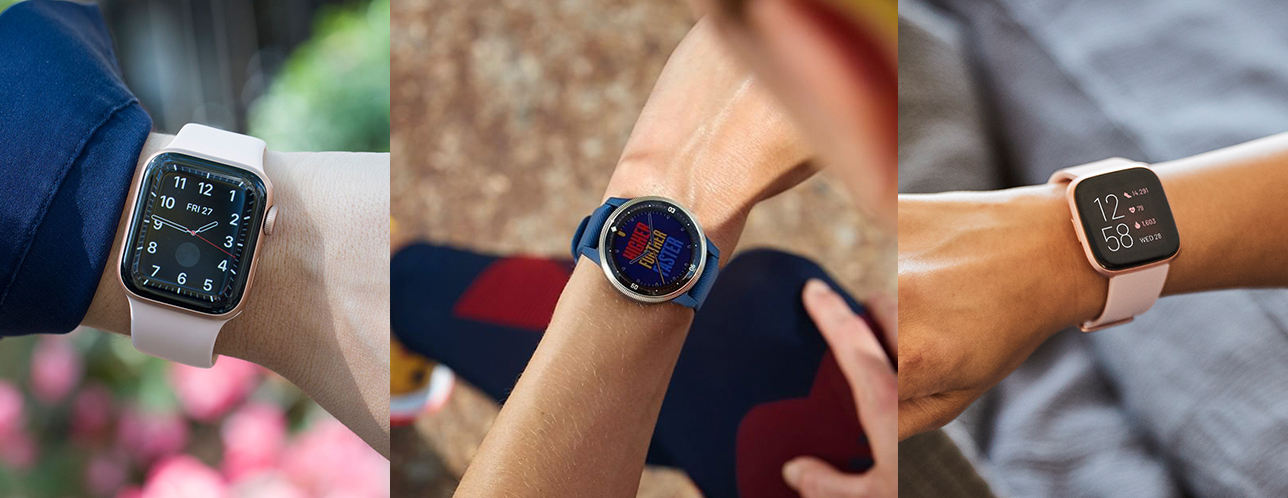 Budget vs Premium: Where the market stands
Budget vs Premium: Where the market stands
The premise of our focus on smart – watches is based on two categories: af – fordable (budget) and premium. When it comes to the budget arena, the market is heavily populated within the sub-INR 5,000 price bracket. And manufacturers realize they have takers for products, as long as they deliver quality to the consumers. In the past 12 to 15 months, the change in mindset towards smartwatches has catapulted brands such as Noise, Fire Boltt, Molife, and Amazfit to join the bandwagon. Noise is an interesting case study in this subject. The brand relies on products customized with software features that are easy to use and not very technical for layman.
“According to the recently released data by IDC, three product categories, combined under the wearables umbrella, witnessed more than double the number of shipped devices in the second quarter of 2021, in comparison to the same quarter for 2020,” Khatri mentions with glee on his face. But when you ask him what has really appealed to the customer about the smartwatch, he believes the mixture of fitness and technology has worked in their favour. “Availability of a wide variety of sports modes to choose from has now become essential parameter that a consumer considers when they step into their journey of buying a smartwatch,” Khatri talking about the success formula of his brand in this segment.
And then you also have newcomers like Fire Boltt that is taking the aggressive route with brand ambassadors Virat Kohli and Vicky Kaushal on board. “We happened to register the maximum growth by any brand, with 243%, owing to our extensive range of smartwatches for all. Our outreach via our brand ambassadors also aids in establishing a rapport with the customers,” Arnav Kishore and Aayushi Kishore, Co-founders, Fire Boltt shared their insights and growth trajectory in the market. Similarly, Noise has got famous Indian cricketer, Rishabh Pant on board, who is now a strong presence in all their TVCs and digital advertising. Marketing is usually the best strategy for brands in the country, and it seems smartwatches have now come into that category, along with smartphones, washing machines, and other home appliances.
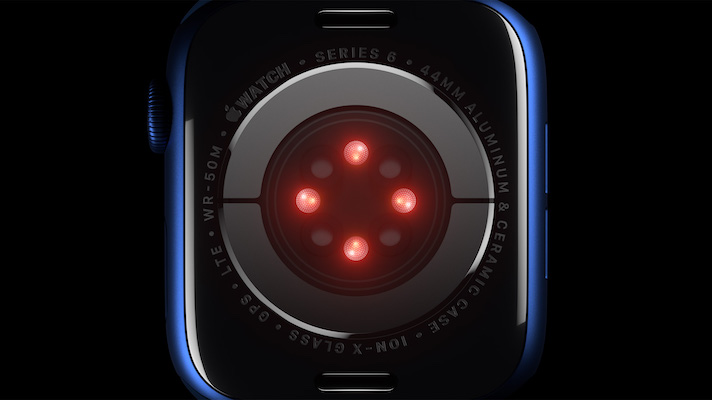 Time for the SpO2 sensor to go mainstream
Time for the SpO2 sensor to go mainstream
Most of us would have Googled the word SpO2 sensor before 2019, especially because nobody knew what it really does and how it helps. But in the COVID era, with your lungs becoming a prime target of the virus, the blood monitoring system has become a core part of fitness for people across the globe. The SpO2 sensor essentially is meant to track the blood oxygen levels inside your body. And it is impressive to see the feature being packed into a smartwatch. “No one knew anything about SpO2 before COVID. However, this was an exceptional situation wherein having a SpO2 sensor became a must in any smartwatch offering,” Deepesh Gupta, Managing Director, Molife. The Kishore duo from Fire Boltt also agree to this buyer trend and said, “SpO2 sensor has become a necessity in any smartwatch, along with other trackers for heart and blood pressure.”
Faisal Kawoosa from techARC also talks about the demand for such features. “The attach rate of SpO2 feature to measure oxygen saturation is increasing in wristables. This will become a mainstream feature going forward,” he adds.
But do manufacturers see SpO2 becoming a mainstay for years to come, even after COVID subsides into the oblivious? “As time goes by, in my opinion, the importance of this type of sensor in smartwatches is likely to come down,” Gupta claims. And he believes other important features such as ECG and blood sugar monitor will have a greater say in the future. “The requirement and inclusion of other sensors, such as ECG, blood sugar, etc. will gain more importance, as technology progresses and the accuracy of these parameters improves,” he adds. With heart-related issues becoming more prevalent, adding such features to a smartwatch will help people to keep a more holistic track of body parameters.
Aiming for the sweet spot
Now that we have covered the trends and features that work for affordable smartwatches, it is time to analyze what actually sells in this segment. “The major volume driver is the INR 2,499 to INR 3,999 customer price point. Most of the volumes is currently amongst firsttime adopters, which is also driving the segment fall in this price range,” Gupta gives his insight into the market trends. For brands such as Fire Boltt, the price spectrum is a touch higher. “The maximum growth has been seen in the segment that ranges up to INR 5,000 to INR 6, 000,” the Kishore duo explains. Safe to say, the affordable market is yet to reach its potential, with millions likely to be added in the coming years.
 Matching up with the big boys
Matching up with the big boys
The growth is heavily skewed in favour of the budget segment, but the premium market is where the money makers are relishing the prospect of the growing demand. TechARC explains that by value the smartwatch segment in India is led by Apple Watch with 37% share, followed by Samsung at 18% and Fossil at 10%. The odd one here is Apple with its WatchOS platform. Google has joined hands with Samsung to rework its Wear OS ecosystem once again. The latest Galaxy series smartwatches from Samsung benefits from this association and offers the best of Tizen OS and wider app compatibility through Android Wear.
Both the brands will be hoping to narrow the gap from Apple. But the premium gang also has gatecrashers like Amazfit, Huawei and more recently OnePlus added to the mix. “Smart wearable buyers have become advanced and look for feature-packed yet practical products when making a purchase decision,” Rishi from Huawei explains. He also believes that a buyer for a premium smartwatch looks for more than just value for his money. “Hardware considerations such as a long-lasting battery and large displays that add both elegance and performance to a smartwatch are also the deciding factors that a customer evaluates while making a purchase,” he adds.
And while the value conversion for this segment is higher, the volumes are still minuscule, compared to what the affordable segment has witnessed during the same period. And the feature list is more evolved beyond hardware for buyers in this bracket. They want a product that is polished in all aspects, especially the software running on it. One of the major reasons behind the success of Apple Watch is the same template that works for iPhone and Macs. The Watch Series gets the same software, built from scratch and tuned perfectly to give you optimum performance on the hardware side. All these traits mean people don’t mind splurging big money for the Apple Watch. And every year, the prices are just going up. Because of this, brands such as Samsung, Huawei, and OnePlus have got the room to make up for the gap left out by Apple in the past few years. Now, all they have to do is match its biggest competition in every step, and success is more or less guaranteed.
Using Android has been the Achilles heel for manufacturers over the years. And a repeat of the saga has been witnessed with smartwatches as well. Google is expected to buck the trend with its newly-formed venture with Samsung but the results will most likely bide its time. And time is not something that most of these brands have, with the Apple juggernaut continuing to roll on with great success. Unlike the budget products, people demand more from the established players, and understandably so. After all, they have the know-how, the manufacturing expertise, the money to invest in the long term without being overly concerned about short-term results.
Looking ahead
Most brands foresee unprecedented growth, but that’s already happening. The buyer is going to expect a lot more for very little money. So, it is up to the companies and their vast R&D setup to come through with solutions that work for all kinds of buyers. Fitness is going to be a key part of the wearable arena, but lifestyle also has its equal imprint through technology and that’s where these devices need to evolve and fast. Everyone would be expecting Apple Watch-like quality with polished software and functional features, at half the cost. Now, it is up to the industry to decide whether they want to meet the consumer half-way or they expect some technology breakthrough to make it viable for rolling out affordable products with all the bells and whistles.
Best Smartwatches Worth Buying In India Across Budget And Premium Segment
Here is a look at some of the smartwatches in the market that have made their name based on value, features, and yes quality. Take your pick from across different price brackets
Amazfit GTS 2 Mini
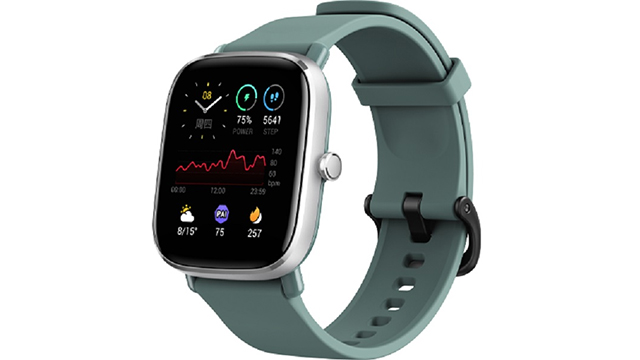 Amazfit GTS 2 Mini is a smartwatch that might become your favourite workout companion. It features 70+ sports modes, helps you with sleep and blood oxygen level monitoring thanks to the SpO2 sensor. The design of the smartwatch is pretty lightweight at 19.5 grams which makes it easy to wear all day. The device has a 1.55-inch bright AMOLED screen that helps you with different notifications and offers sharp details. It pairs with any phone via Bluetooth that helps you activate voice commands from Google Assistant or Alexa. And finally, with a battery life of 22 days, you can forget to charge the GTS2 Mini every day.
Amazfit GTS 2 Mini is a smartwatch that might become your favourite workout companion. It features 70+ sports modes, helps you with sleep and blood oxygen level monitoring thanks to the SpO2 sensor. The design of the smartwatch is pretty lightweight at 19.5 grams which makes it easy to wear all day. The device has a 1.55-inch bright AMOLED screen that helps you with different notifications and offers sharp details. It pairs with any phone via Bluetooth that helps you activate voice commands from Google Assistant or Alexa. And finally, with a battery life of 22 days, you can forget to charge the GTS2 Mini every day.
Price: INR 6,999*
Huawei GT 2 Pro
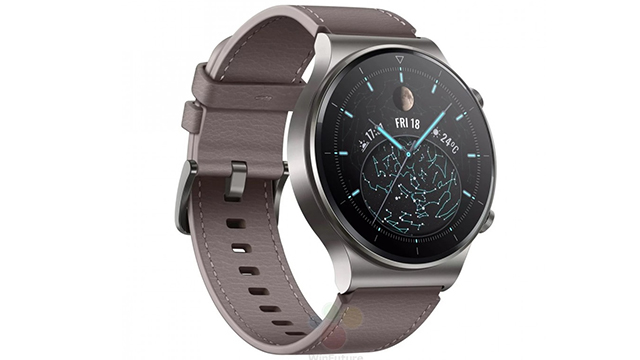 Huawei’s premium addition to the smartwatch segment is the GT 2 Pro. The design is similar to a regular watch, with a round-shaped display and dials on the side for controls. It features a 1.39-inch AMOLED screen that is water-resistant and has a titanium frame for durability. It has a slew of trackers for fitness and sports regime, and you have Bluetooth connectivity to pair with your smartphone. The GT 2 Pro supports wireless charging as well.
Huawei’s premium addition to the smartwatch segment is the GT 2 Pro. The design is similar to a regular watch, with a round-shaped display and dials on the side for controls. It features a 1.39-inch AMOLED screen that is water-resistant and has a titanium frame for durability. It has a slew of trackers for fitness and sports regime, and you have Bluetooth connectivity to pair with your smartphone. The GT 2 Pro supports wireless charging as well.
Price: INR 19,999*
Apple Watch Series 7
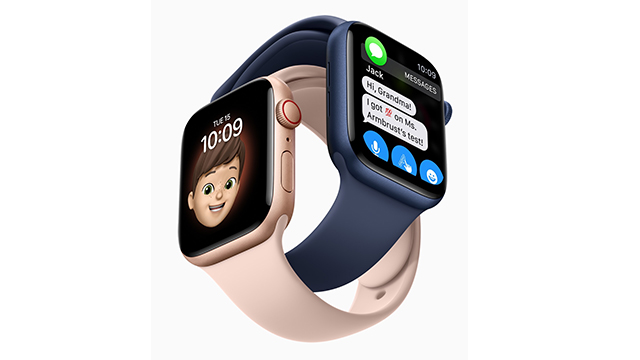 Apple launched its new Watch Series 7 in the market, and is one of the most popular wearables among consumers. The new device gets a refined design and bigger screen with a slimmer bezel. It has the Crown Dial on the side for navigating, along with the touch Retina display on board. It gets IP rating which makes it water-resistant as well. The battery life is well supported by WatchOS running on the device that also brings app compatibility.
Apple launched its new Watch Series 7 in the market, and is one of the most popular wearables among consumers. The new device gets a refined design and bigger screen with a slimmer bezel. It has the Crown Dial on the side for navigating, along with the touch Retina display on board. It gets IP rating which makes it water-resistant as well. The battery life is well supported by WatchOS running on the device that also brings app compatibility.
Price: INR 41,900*
Fire-Boltt Beast Pro
 Fire-Boltt Beast Pro is another budget smartwatch that looks to appeal with its features. It sports a 1.69-inch touch display for easy access to apps and other functionalities. The watch lets you seamlessly take voice calls through the paired smartphone. You even have a voice recorder built into the device, as well as the ability to activate voice assistants from Apple and Google for quick commands. For health-centric usage, the device comes with an SpO2 sensor, heart rate monitoring system, sleep monitor, and even menstrual reminder at this price. Even after packing all this, you get up to 5 days of battery life.
Fire-Boltt Beast Pro is another budget smartwatch that looks to appeal with its features. It sports a 1.69-inch touch display for easy access to apps and other functionalities. The watch lets you seamlessly take voice calls through the paired smartphone. You even have a voice recorder built into the device, as well as the ability to activate voice assistants from Apple and Google for quick commands. For health-centric usage, the device comes with an SpO2 sensor, heart rate monitoring system, sleep monitor, and even menstrual reminder at this price. Even after packing all this, you get up to 5 days of battery life.
Price: INR 3,999*
NoiseFit Active
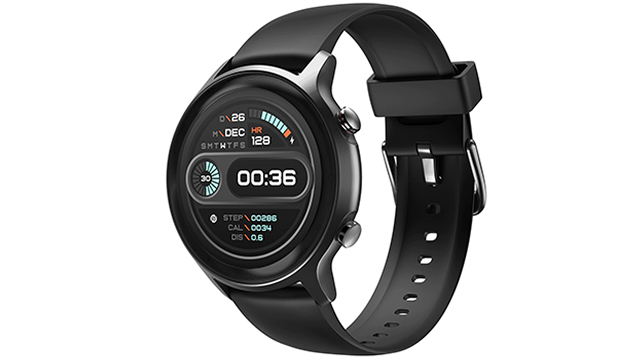 Noise is another brand that caters to the budget smartwatch arena with NoiseFit Active. It features a 1.29-inch TFT screen, supports 14 sports modes, and pairs up with the NoiseFit app to let you control other functions on the wearable. Add to that, it gets 5ATM durability allowing you to dip into the pool wearing it. Other sensors like the SpO2 monitor gives your mind the peace one requires. The circular shape of the watch offers the continuity people like with anything worn on the wrist.
Noise is another brand that caters to the budget smartwatch arena with NoiseFit Active. It features a 1.29-inch TFT screen, supports 14 sports modes, and pairs up with the NoiseFit app to let you control other functions on the wearable. Add to that, it gets 5ATM durability allowing you to dip into the pool wearing it. Other sensors like the SpO2 monitor gives your mind the peace one requires. The circular shape of the watch offers the continuity people like with anything worn on the wrist.
Price: INR 3,299
Fossil Gen 5 Smartwatch
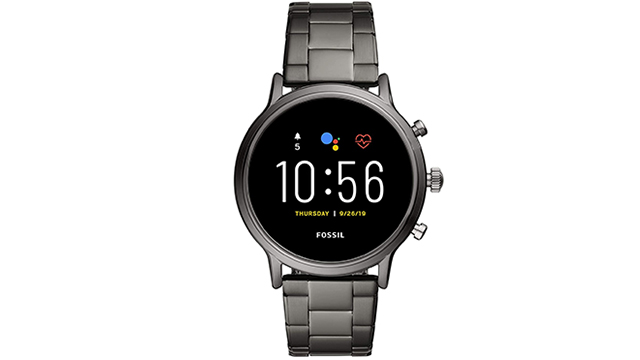 Fossil is another premium contender in this arena and it has got multiple models available in the market. The stainless-steel variant features a touch-centric circular display and is powered by WearOS from Google. It has a heart-rate sensor, 8GB storage which is expandable up to 16GB and the display gives you message, call, and WhatsApp notifications. It offers over a day’s battery life.
Fossil is another premium contender in this arena and it has got multiple models available in the market. The stainless-steel variant features a touch-centric circular display and is powered by WearOS from Google. It has a heart-rate sensor, 8GB storage which is expandable up to 16GB and the display gives you message, call, and WhatsApp notifications. It offers over a day’s battery life.
Price: INR 18,495*
Mi Watch Revolve
 Mi Watch Revolve features a 1.3- inch AMOLED display that is built over a circular design. It has sensors such as heart rate, sleep monitoring and supports up to 110+ watch faces for customization. With the help of built-in GPS, you can take it for hikes and use it for navigation purposes. The smartwatch works with any phone with Android 4.4 version or higher, and iOS 10 version or later. It also offers water resistance up to 5ATM and boasts a battery life of 12 days on a single charge.
Mi Watch Revolve features a 1.3- inch AMOLED display that is built over a circular design. It has sensors such as heart rate, sleep monitoring and supports up to 110+ watch faces for customization. With the help of built-in GPS, you can take it for hikes and use it for navigation purposes. The smartwatch works with any phone with Android 4.4 version or higher, and iOS 10 version or later. It also offers water resistance up to 5ATM and boasts a battery life of 12 days on a single charge.
Price: INR 9,999*
Fitbit Versa 2
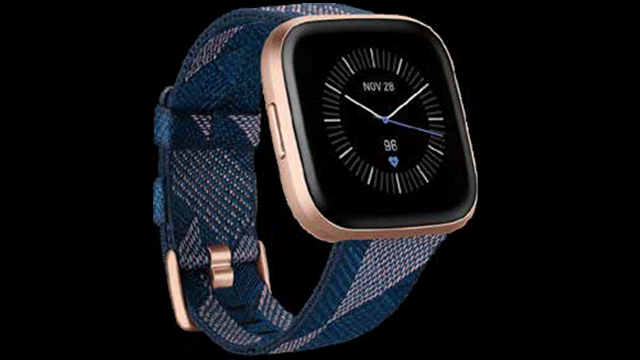 Fitbit now belongs to Google but it is still one of the most reliable fitness-centric smartwatches in the market. The Versa 2 has a 24×7 heart rate tracker, various fitness modes that can help you compete with friends in every step. Fitbit’s health ecosystem is quite popular among serious enthusiasts. You can also store and play 300+ songs from the Versa 2 which works with both Android and iOS devices. It offers over 5 days of battery life that makes it quite effective.
Fitbit now belongs to Google but it is still one of the most reliable fitness-centric smartwatches in the market. The Versa 2 has a 24×7 heart rate tracker, various fitness modes that can help you compete with friends in every step. Fitbit’s health ecosystem is quite popular among serious enthusiasts. You can also store and play 300+ songs from the Versa 2 which works with both Android and iOS devices. It offers over 5 days of battery life that makes it quite effective.
Price: INR 8,999*
OnePlus Watch
 The OnePlus Watch runs on customized OS that supports different watch faces and works through the OnePlus fitness app. The Watch has a slew of sensors for the health-conscious and promises up to a week’s battery life. It lacks support for third-party apps, and has some limitations with content usage on the device. You can store songs thanks to its built-in storage and play them through Bluetooth accessories.
The OnePlus Watch runs on customized OS that supports different watch faces and works through the OnePlus fitness app. The Watch has a slew of sensors for the health-conscious and promises up to a week’s battery life. It lacks support for third-party apps, and has some limitations with content usage on the device. You can store songs thanks to its built-in storage and play them through Bluetooth accessories.
Price: INR 14,999*


